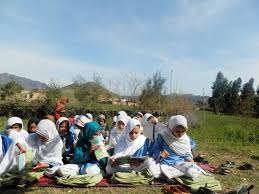
Education in Rural Areas – What can be Done?
1. Introduction. Education is the most important tool for fostering social and
economic progress for a country and is also seen as a source of national expansion.
In Pakistan, free education for children between the ages of 5 and 16 is a part of the
constitution. Still, the government is failing to provide educational opportunities qualitatively in Pakistan, in general, and in rural areas, in particular. As per
the 2016 United Nations Global Education Monitoring Report, Pakistan is 50+ years
behind its primary education target. Most of the schools even lack basic building
structures like classrooms, bathrooms, and facilities like furniture and other training
aids.
2. The private school system is playing a major role in this education challenge. But,
private institutes are more inclined towards the city regions because of
more population and affordability. No doubt, steps have been taken to strengthen the
education system for primary and secondary levels, and informal education has also
played its role. Unfortunately, major challenges and issues have continuously hindered
us from achieving the goal.
3. Aim. To analyze the reasons for deteriorated condition of the education system in
rural areas and devising a way forward.
4. Sequence. The sequence, I shall be following is as under:-
a. Condition of Institute in Rural Areas
b. Analysis
c. Recommendations
d. Conclusion
5. Condition of Institute in Rural Areas. In Pakistan, 41 percent of children are
not attending school, and in the province of Baluchistan, this figure has dropped to 70.
The primary factor to determine whether the boy or girl will be enrolled in school or not
is the distance from home. In rural areas, the male literacy rate is 64 percent compared to
14 percent for females, showing the clear discrepancy between genders, cities and
provinces, wealth, and poverty.
6. The quality of education served is another main contributing factor that
discourages parents from enrolling their children in school. After getting promoted from
primary and middle classes, students are even unable to read and write simple text.
7. Analysis. Factors affecting the education standards in rural areas are as
under:-
a. Acute Shortage of Staff. There is an acute shortage of teachers, the
fulcrum of the education system, in schools. Lack of regular recruitment
and lack of specialist teachers are the main reasons for this shortage. Due
to this, most of the school buildings are vacant and are used by local
influencers as per their own interests.
b. Basic Facilities at School. The majority of students in rural areas don’t
have access to basic infrastructure such as school buildings, potable water
and sanitation
.
c. Quality of Education Delivered. The outcome/ effect on the
students going to school is not impressive enough to motivate parents to
get their children enrolled. The quality of education served is also significantly
compromised. Some of the reasons for the poor quality of instruction include
a lack of funds, a low teacher-to-student ratio, and a lack of infrastructure.
d. Rotted Education System. Promoting students by giving grace
marks, cheating culture in exams, leakage of papers, corruption, and
undue favors are the root causes of this rooted education system.
e. Inclination of Government Officials towards Private Schools.
Competent authorities, powerful government officials, and those who are
aware of the importance of education hesitate to enroll their children in
government schools.
8. Recommendations. Although, the condition of the education system in rural
areas is not appreciable, yet, if some measures are taken place, improvement can be
done:-
a. Regular Recruitment of Staff. Special allocation in the annual
education budget for new enrollment of teachers on a merit basis. In parallel,
accountability on the attendance of permanent teachers and temporary
arrangements shall be done at the district level.
b. Ensuring Quality of Construction. A provincial-level central
the committee shall conduct a detailed examination of the budget allotted for construction.
Maintenance of the building should also be considered. Each rupee shall be
spent on construction, in true letter and spirit.
c. On Merit selection and Early Retirement. To improve the quality of
education and the student-teacher ratio, teachers who seem old and are not
interested in attaining new technology shall be forcefully retired with respect and
a chance shall be given to fresher by allocating the same budget for the new
induction of teachers on a merit basis.
d. Cheating Free Exams. Cheating and favors inside and outside the
exam hall are to be discouraged through zero tolerance by using advanced
technology. Students shall feel confident in the system and all back-door access
to exams shall be strictly sealed at the district level and supervised at the provincial level.
e. Compulsory Enrollment of Government Officers Toddlers. Highly
competent government officials are least bothered by the caliber of education
delivered in government schools. To encourage their interest and solicit their
feedback, their children shall be enrolled in government schools. The same shall
be ensured at the provincial level.
9. Conclusion. Education contributes to the preservation of culture and
helps in boosting the economy of a country. Despite knowing the significance of
education, its quality is deteriorating due to the low annual education budget, shortage
of teachers, and corruption in the educational sector. However, it would not be fair to
conclude on a dejected note. Utilizing the allocated budget religiously, research,
improving teacher and student ratio, designing cheating-free exams and building trust in
the system can lead to a better quality of education in Pakistan, in general, in the rural
regions in particular.
Leave a Comment
Related Posts
-
18 May 2022
-
18 May 2022
-
20 May 2022
Sign up for free, explore fun and knowledgeable content, and make your own portfolio!
🟢All System Operational
© 2022 - 2024 Freelancing by Fay.
Design by Limitless Technologies Pakistan - All rights reserved.


1663566630.png)




0 Comments